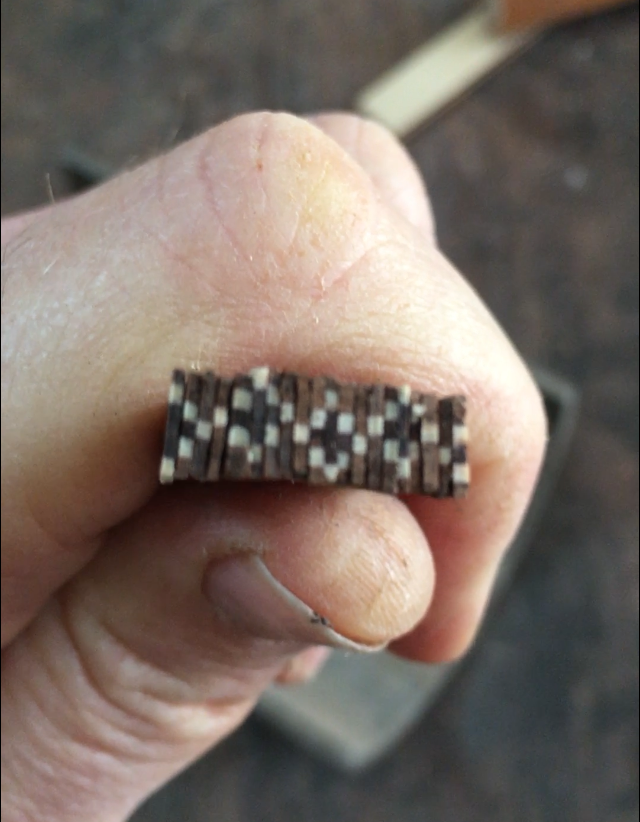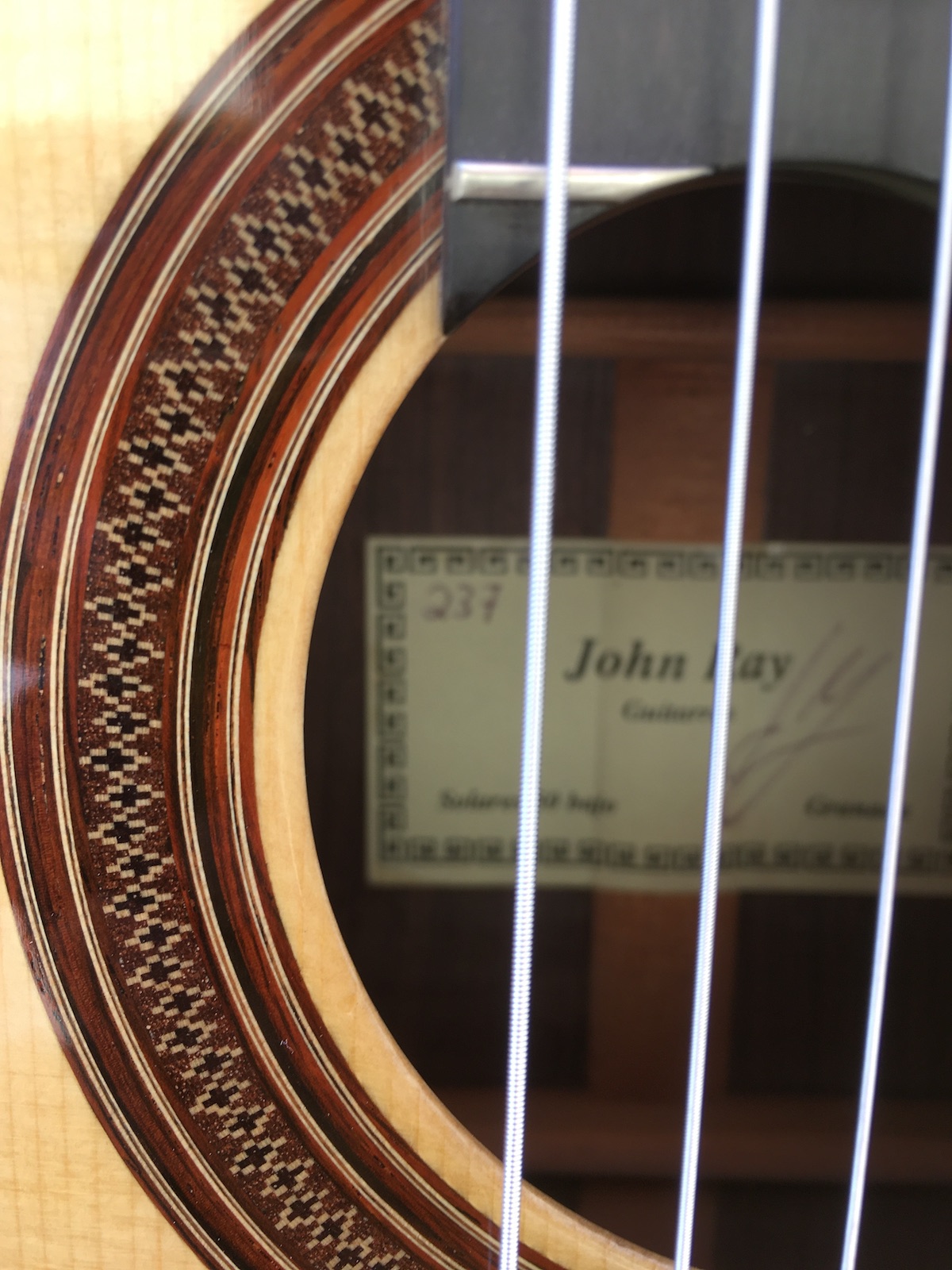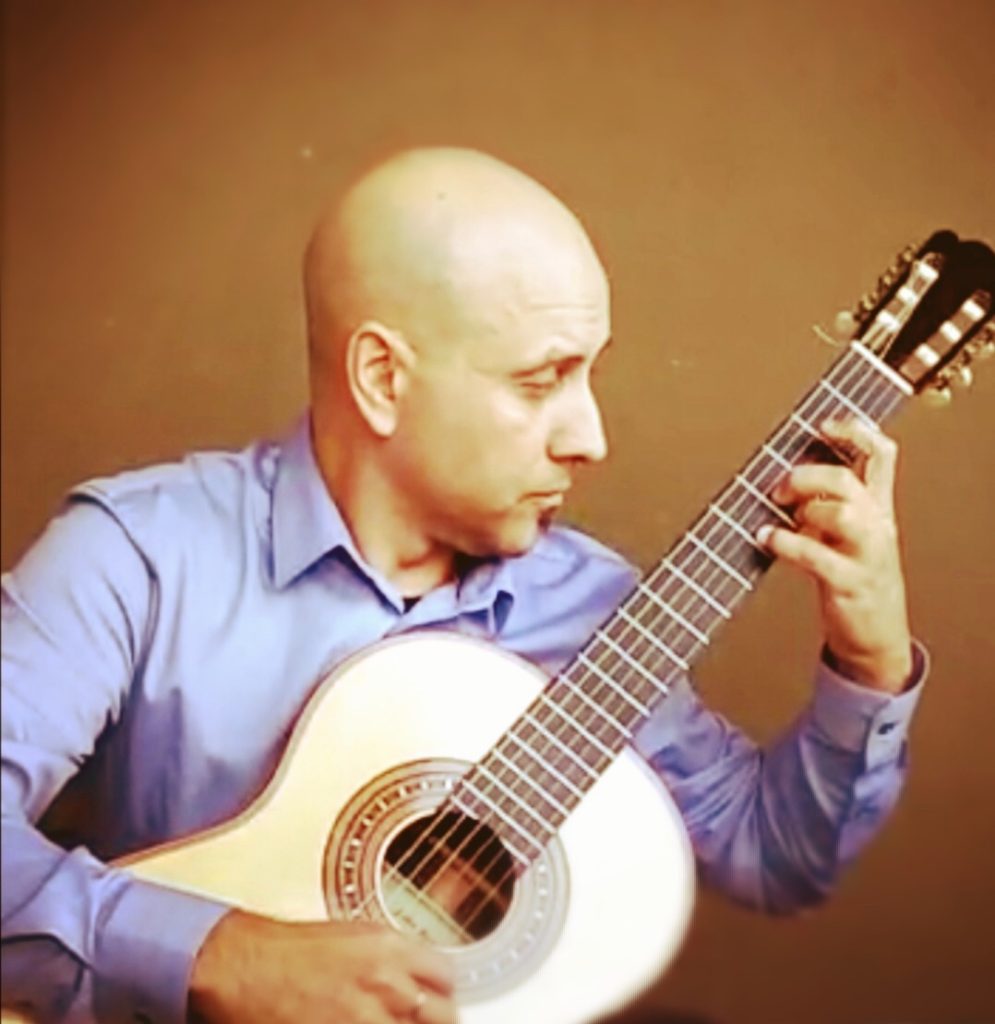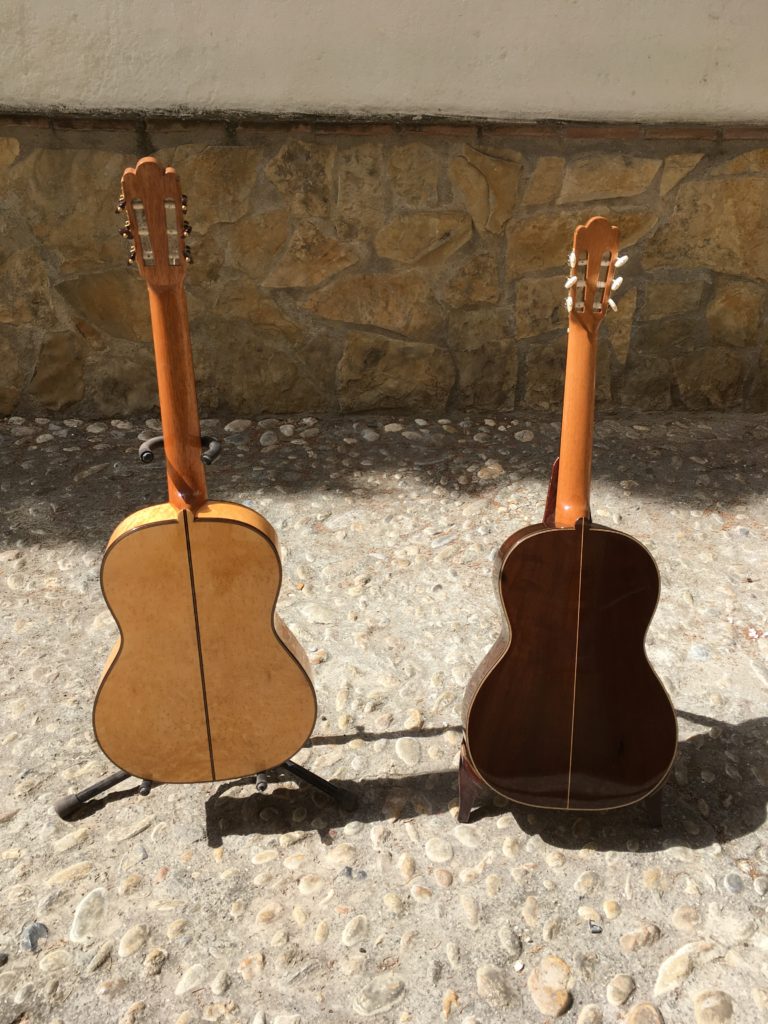Category Archives: Antonio de Torres 1892
Inlay
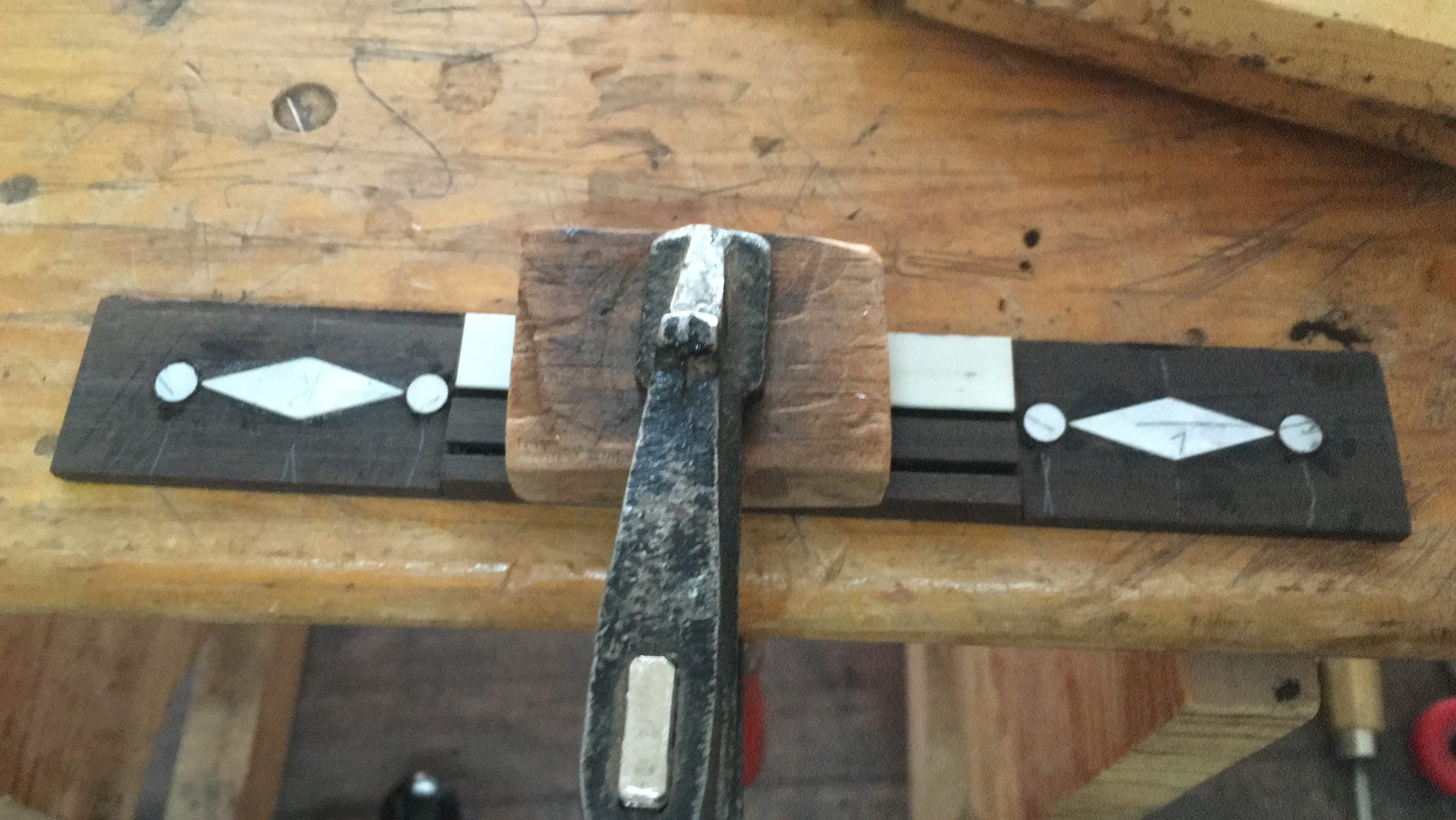 Guitars can be absolutely beautiful but usually the beauty is in the wood or in the functional form of the instrument. There are exceptions, however, and clients seem to love something a bit extra. My concert model and the Santos are decorated quite simply but the Torres SE 153 is pretty flashy. Another model that I used to make, a copy of Antonio de Lorca García used mother-of-pearl inlays in the bridge as well. Its something that takes some skill but really draws the eye. I like it but would never put it on all of my guitars. Furthermore I use MOP almost only when making my exact copies.
Guitars can be absolutely beautiful but usually the beauty is in the wood or in the functional form of the instrument. There are exceptions, however, and clients seem to love something a bit extra. My concert model and the Santos are decorated quite simply but the Torres SE 153 is pretty flashy. Another model that I used to make, a copy of Antonio de Lorca García used mother-of-pearl inlays in the bridge as well. Its something that takes some skill but really draws the eye. I like it but would never put it on all of my guitars. Furthermore I use MOP almost only when making my exact copies.
Fernando Espí video
Javier Riba in Granada
Javier Riba has been playing my guitars since 2005 when he came to visit my workshop attracted by the copy I made of Torres’ SE 153. Last night he gave a beautiful recital at the Casa Manuel de Falla for the opening night of the International Guitar Festival of Granada. The music was beautifully played and evoked the Spain of the early 20th century. Riba always gives the audience a bit of background for each of the pieces he plays and last night was no exception. His talent as a teacher shines through in those moments. As for the programme, the Evocaciones by Antón García Abril were particularily wonderful and Falla too was excellent. For myself it was a great pleasure to have one of my guitars played on stage for the Granada festival.
Torres Comparison
I had some questions about the difference between two different Torres models which were available in my workshop for testing for a short time. After having three very good players put them through their paces here are the conclusions:
The SE70 is a bit easier to play and has a sparkle to it that the other one doesn’t have. It is really quite loud and you might even say explosive. At the same time you have to be careful how hard you push it. The basses are quite amazing and reminiscent of the original. This is the sort of guitar that you pick up and get excited about just because it is so very alive.
As for the SE153, the sound is slightly sweeter but also more controllable. The trebles have a fuller, thicker sound and it has more dynamics. According to one guitarist there is more sympathetic vibration from the guitar itself and from the strings. Sustain above the 12th fret seems to be better too. As a maker I like this one better because you can do more with it and I know from experience that it is not underbuilt.
The above is not surprising at all if you take into account the differences in construction between the two. The SE 70 is very lightly built, almost too much of a good thing. A thin top favours basses over trebles (usually) and is very good for volume. Two of the fan braces extend through openings under the lower transverse bar and possibly extend the vibrational area of the top. However, I strung it with D’addario J43 strings and that low tension makes a difference too. The saddle also might be a bit too low for its own good. It is worth mentioning that this is the very first copy of the SE 70 that I have made. On the other hand I have been making the SE153 copies for 15 years and have managed to achieve something really special and sophisticated. As you can see from the picture the SE153 is maple and the SE70 is rosewood; there might be a slight influence there too.

